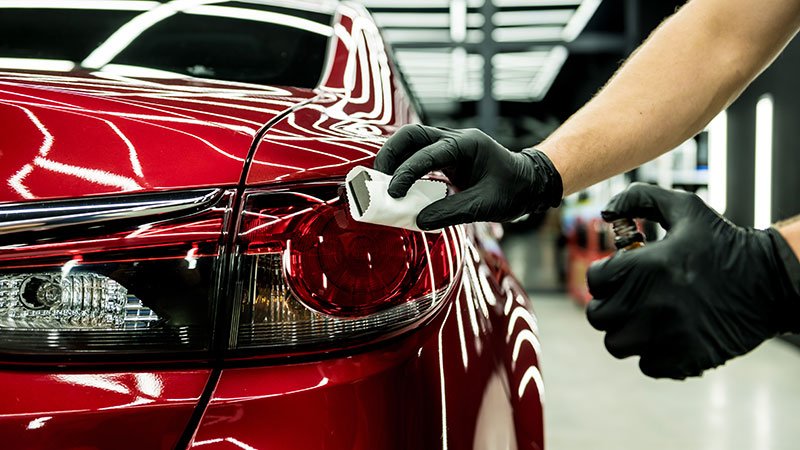A Comprehensive Guide to the Kinds Of Ceramic Finish on the marketplace
Ceramic finishes have actually arised as a pivotal solution across different industries due to their special homes and applications. As we check out the distinct features and applications of these layers, the ramifications for performance and durability end up being increasingly obvious, elevating inquiries concerning which type could best match your demands.
Recognizing Ceramic Coatings
Ceramic coverings are innovative protective solutions that have acquired popularity in various industries, especially in automobile and aerospace applications. These coatings consist of a fluid polymer that, when treated, develops a resilient, hydrophobic layer externally of the substrate. This layer gives boosted resistance to environmental pollutants, UV radiation, and chemical exposure, thereby expanding the life and visual charm of the underlying material.
The essential component of ceramic finishes is silica, which contributes to their hardness and longevity. The application procedure normally involves surface area preparation, application of the covering, and healing, which can be accomplished through warmth or UV light. When cured, ceramic coatings show outstanding bonding buildings, enabling them to adhere strongly to a variety of surface areas, including metals, plastics, and glass.
In enhancement to their protective features, ceramic layers also supply convenience of upkeep. Their hydrophobic nature minimizes the adherence of dirt and crud, making cleaning less complex and less constant. Overall, the fostering of ceramic finishes stands for a significant development in surface defense innovation, giving both practical and aesthetic benefits across several markets.
Types of Ceramic Coatings
Different sorts of ceramic finishes are available, each designed to meet certain performance requirements and applications - scratch repair sarasota. The most typical kinds include:
Silica-based Coatings: These layers mostly are composed of silicon dioxide and are known for their longevity and chemical resistance. They are extensively used in automobile and commercial applications.
Titanium Dioxide Coatings: Renowned for their photocatalytic homes, titanium dioxide layers are commonly used in atmospheres where self-cleaning and antifungal residential properties are preferable, such as in building products and vehicle coatings.
Zirconia Coatings: Defined by their high-temperature stability and thermal resistance, zirconia coverings are utilized in applications such as turbine engines and high-performance auto parts.
Alumina Coatings: Showing exceptional hardness and thermal security, alumina layers are frequently made use of in wear-resistant applications, consisting of cutting devices and commercial machinery. - Auto Detailing
Crossbreed Coatings: Integrating the residential properties of various products, hybrid coverings supply improved performance attributes, making them suitable for unique and requiring applications.
Each sort of ceramic finishing offers distinct objectives, allowing customers to pick the most ideal option based upon certain ecological conditions and efficiency needs.
Benefits of Ceramic Coatings
Ceramic finishes, in certain, deal numerous benefits that make them progressively prominent among suppliers and customers alike. These finishings are resistant to scratches, chemicals, and UV rays, making certain that the underlying surface continues to be secured over time.
Along with durability, ceramic layers provide excellent hydrophobic residential or commercial properties, enabling simple cleaning and maintenance. This water-repellent nature lessens the adherence of dust, gunk, and other impurities, which can extend the aesthetic appeal and capability of the surface area. Furthermore, ceramic coverings can substantially boost thermal resistance, making them perfect for applications that sustain heats.

Application Process
When applying ceramic layers, a careful method is important to attain optimum results. The application process typically begins with comprehensive surface prep work. This entails cleaning, decontaminating, and polishing the surface to remove all impurities, including dirt, grease, and prior waxes or sealants. A tidy surface ensures correct bond of the covering.
Once the surface is prepped, the following action is you could try this out to use the ceramic covering. The covering needs to be applied in thin layers, as thicker applications can lead to unequal coatings.
After application, the coating requires a particular healing time, generally varying from a few hours to a full day, depending on the item. Following these actions faithfully will make the most of the performance and longevity of the ceramic finishing, giving a durable protective layer for the surface.
Maintenance and Durability
To guarantee the durability and efficiency of a ceramic finishing, routine upkeep is crucial. Ceramic coatings, recognized for their durability and safety top qualities, need specific treatment routines to optimize their lifespan and efficiency. The very first step in upkeep includes routine cleaning with pH-neutral soap, avoiding rough chemicals that can break down the covering. It is advisable to clean the lorry routinely, preferably every 2 weeks, to avoid the build-up of contaminants that could compromise the coating's integrity.
Along with normal washing, periodic examinations are essential. Look for signs of wear or damages, such as hydrophobic properties lessening or surface flaws. If essential, a light gloss may be put on revitalize the coating without removing it away.
Furthermore, the application of a booster spray can boost the finish's hydrophobic effects and recover its gloss. This is especially useful for coatings that have actually been in usage for an extended duration. Ultimately, by sticking to these upkeep techniques, one can considerably prolong the life of a ceramic layer, making certain that it continues to supply optimum security versus environmental elements and preserve the visual charm of the automobile.
Verdict
